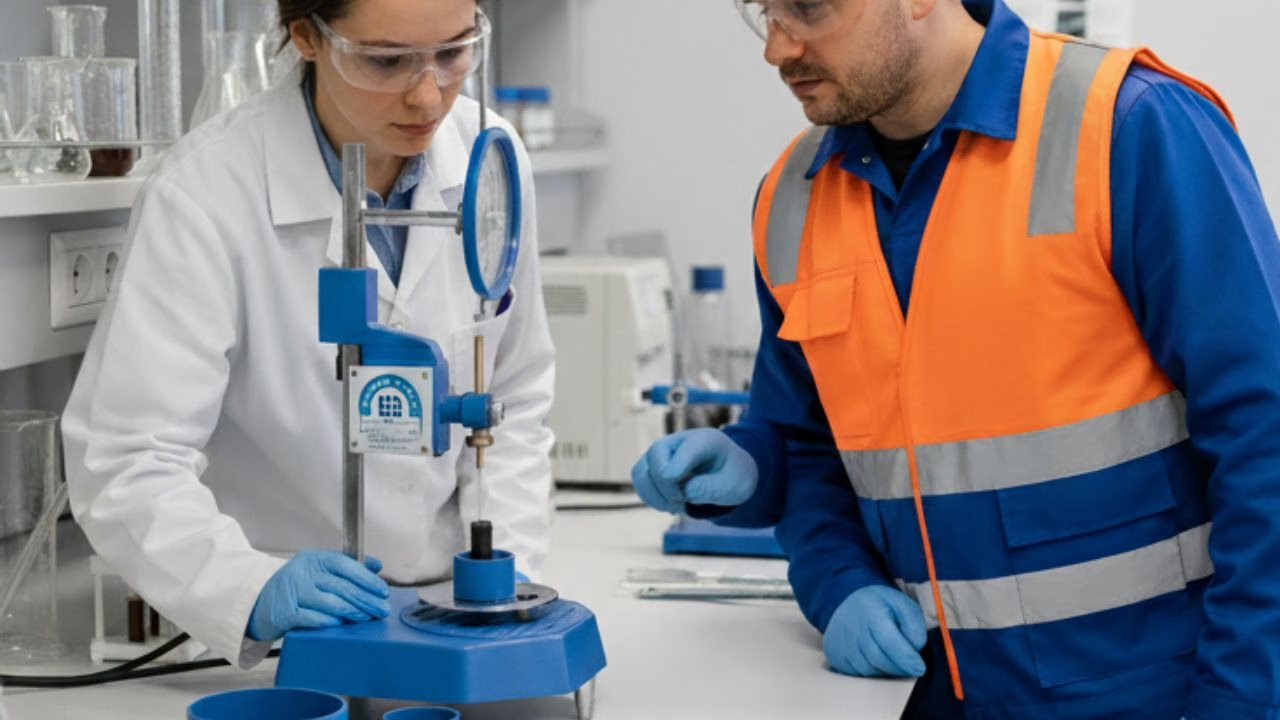Total station in surveying is used for computing slant distances, horizontal and vertical angles, elevations in topographic and geodetic works, tacheometric surveys, etc. The total station is a pre-eminent contribution to modern surveying and hence the equipment is designed for speed, range, and accuracy. They are a combination of Theodolite and Electronic Distance measurement (EDM). This enables computing the vertical, horizontal as well as slope measurements.
They act as a substitute for theodolite, EDM, Data collectors, and Microprocessors. Moreover, they are lightweight and compact machines and perform like transit stadia and plane table alidades.
The integration of microprocessors helps in the data collection and measurement computation process. Further to that, the inbuilt software helps to generate the maps instantly.
- Applications of Total station
- Working Principle of Total station
- Major components of Total station
- Total station applications
- Setting up of a total station
- Advantages of Total station
- Disadvantages of Total station
Applications of Total station
Apart from taking the measurements, the total station helps in computing, interpreting, and documenting the data. Here is a list of activities that are computed, interpreted, and analyzed.
- Horizontal angle
- Vertical angle
- Slope distance
- Coordinate of point
- Missing line measurement
- Area calculation
- Contour level
Working Principle of Total station
The total station consists of a built-in emitter, capable of emitting microwaves and infrared signals. The wavelength of these emitted waves helps in calculating the distance between the points.
Distance = velocity * time
Here the distance is calculated by multiplying the time taken to cover a certain distance by the velocity. However, Triangulation and trigonometry methods are adopted for computing the angles and determining the coordinates.
Trending posts……
Major components of Total station
The Equipment is composed of different parts. Below listed are the major components.
- Handle
- Handle securing screw
- Data input/output terminal (Remove handle to view)
- Instrument height mark
- Battery cover
- Operation panel
- Tribrach clamp
- Baseplate
- Levelling foot screw
- Circular level adjusting screws
- Circular level
- Display
- Prism and prism pole
- Objective lens
- Tubular compass slot
- The optical plummet focusing ring
- Optical plummet reticle cover
- Optical plummet eyepiece
- Horizontal clamp
- A horizontal fine motion screw
- Data input/output connector
- External power source connector
- Plate level
- Plate level adjusting screw
- Vertical clamp
- A vertical fine motion screw
- Telescope eyepiece
- Telescope focusing ring
- Peep sight
- Instrument centre mark
A tripod enables one to affix the equipment onto the ground. A handle is available on the top of the equipment for holding it. There are a Data input and output terminal below the handle enabling the data transfer to the computer.
The total station comes with inbuilt software, an operation panel, a keyboard, and a screen. The prism and prism poles help in measuring distances.
Total station applications
The total station consists of an EDM, Theodolite, and a Microprocessor combined into one. They got a memory card for data storage and a battery. A fully charged battery works for about 3 to 5 hrs continuously.
- Coordination determination
- Distance measurement
- Angular measurement
- Data processing
- Coordination Determination
The total station determines the coordinate of an unknown point. The instrument is placed over a known coordinate. The equipment digitally computes the coordinates.
Distance measurement
As mentioned earlier, the total station got an inbuilt miniature emitter. The emitters release microwave signals. The prism reflector or object under survey at the other end reflects the waves. Onboard data interpreters compute the distance by emitting and receiving multiple frequencies.
Angular measurement
The total station uses the distance between the point and the time taken by the waves reflected for deciding angular measurement.
Data processing
The integration of the microprocessor in a total station helps to read and interpret the survey parameters. Subsequently, the data is stored in the memory card of the instrument and later transferred to a computer. They can compute multiple measurements with high precision with compensation for temperature, pressure, and humidity corrections.
Setting up of a total station
- The basic steps involved in setting up are tripod setup, levelling, and instrument focusing.
- The tripod legs are placed firmly on the ground with equidistant legs with the head position above the survey point.
- The total station is placed on the tripod. It is fixed and secured using a centring screw.
- The next step is to sharpen the optical plummet towards the survey point. On sharpening, the optical plummet reticle centres the survey point.
- The bubble is adjusted to the centre by levelling foot screws
- The time taken for levelling the equipment depend on the skill of the operator. However, levelling is the topmost activity to maintain the accuracy of measurements.
- Adjust the plate level by loosening the horizontal clamp. The equipment is parallel to levelling foot screw.
- Turn the instrument at 90 degrees and level using a 3rd levelling screw.
- Subsequently, turn on the instrument.
- Select the tilt function from the opening window followed by adjusting the foot level screw and centre the bubble.
- Rotate the instrument at 90 degrees. Repeat the process.
- Finally, adjust the ring and focus the telescope on the target point.
Advantages of Total station
There are a lot of advantages of total station as mentioned below
- High precision and accuracy.
- Requires limited manpower
- Perform quick fieldwork
- Reduction in manual errors.
- Correction for temperature, pressure etc and digitally rectified.
- Storage and interpretation of data are easy
- Time consumed is less.
- Inbuilt GIS software helps in instant map creation
- Assists in local languages.
Disadvantages of Total station
- The cost of the instrument is high.
- Need highly skilled surveyor with AutoCAD knowledge and professional training.
- Checking errors during the operation is impossible.
- Low battery life.






Awesome